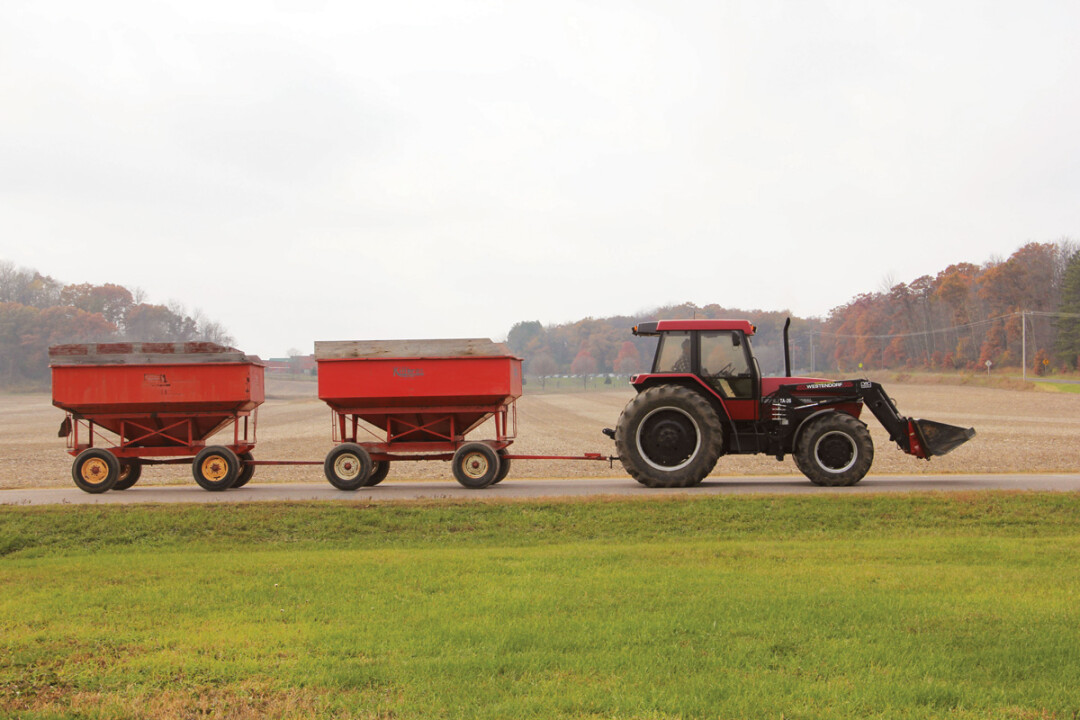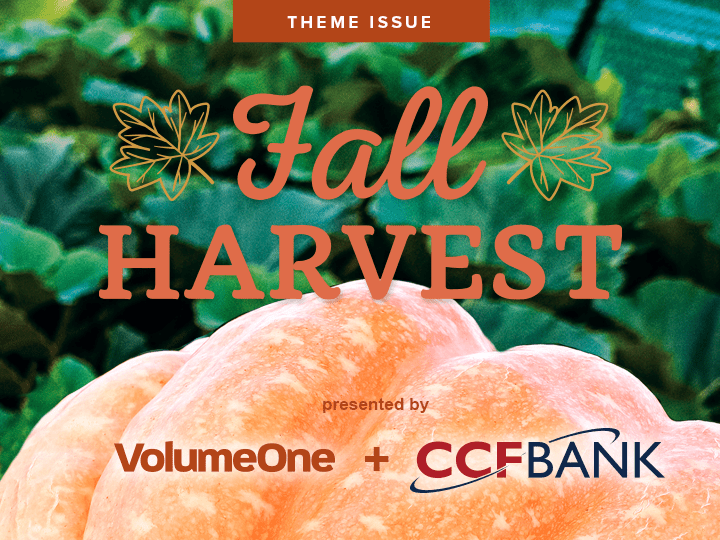Bumper Crop Awaits
Wisconsin corn harvest expected to be near record
Tom Giffey, photos by Nick Meyer

Last year, Wisconsin produced 485 million bushels, putting us among the Top 10 corn states.
It’s not just your imagination: The Chippewa Valley’s cornfields are looking especially bountiful as the annual harvest approaches. So bountiful, in fact, that 2015 could be one for the history books.
“We’re on the cusp of having as good a cropping season straight across the board in this county – and for the most part in this state – on record,” said Mark Hagedorn, Eau Claire County agriculture agent for UW-Extension. Unless there is abnormal weather in the next few weeks (the sound you hear is the region’s farmers knocking on wood to fend off that possibility) and as long as temperatures remain seasonal, the corn crop will make for a “bin-busting year,” Hagedorn said.
Several factors worked together to bring about the bumper crop, he noted. First, most farmers were able to get their crops planted in a timely fashion this spring. Second, there was enough rain – and rain at the right time – during the spring and summer. According to figures compiled by the National Agricultural Statistics Service (NASS), since June 1 Eau Claire has had about 6.5 inches more rain than average. Finally, the region has gotten an above-average number of growing-degree units, a measurement of the accumulation of heat that allows plants to flourish.
“You’re set up to have a good crop, and we have a really good crop in Eau Claire County,” Hagedorn said. “And in my travels across the state, I would say that crops are comparable.”

Corn production is predicted to be strong nationwide. In mid-August, the NASS – a branch of the U.S. Department of Agriculture – forecast that American farmers would produce 13.7 billion bushels of corn this year. While that would be a dip of 4 percent from last year, it would nonetheless be the third biggest year for corn production in history. Furthermore, the report anticipated “record-high corn yields in several states,” including Wisconsin, as well as Iowa, Minnesota, Michigan, Nebraska, and South Dakota.
As of Aug. 23, 77 percent of the state’s corn crop was rated as good or excellent condition, the NASS reported, compared with 58 percent at the same point last year. Furthermore, corn was maturing earlier than it had the previous year.
While Wisconsin is known as the Dairy State, we produce a fair amount of corn, too. (All those cows have to eat something, right?) Last year, it amounted to 485 million bushels, putting us among the Top 10 corn states. (If you guessed Iowa was No. 1, you’re right: Iowans grew 2.37 billion bushels, barely edging Illinois.)
It almost goes without saying that bumper crops are good for farmers and the many businesses – from grain elevators to implement dealers – that fall and rise with their fortunes. However, in a market economy, there is a downside to high production: Put simply, a huge supply can drive down prices. The corn price is hovering around $3.50 per bushel, Hagedorn noted, while two summers ago the national average flirted with $7 per bushel.
What does this mean for farmers’ pocketbooks? “I think there are going to be a lot of producers who are going to be right on that line” between making a profit and taking a loss, Hagedorn forecast. The price of seed, fertilizer, and land have all risen, and having high input costs makes turning a profit more difficult.
That being said, having a huge harvest is preferable to the alternative, even if commodity prices are relatively weak. “If production is going to be as high as what it looks like it could be, even with lower prices, this is going to be helping the producers to at least break even,” Hagedorn said.


